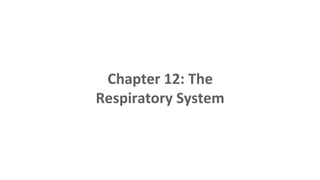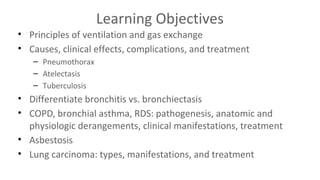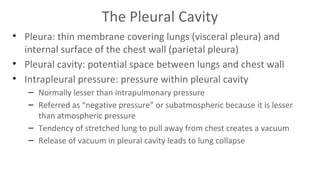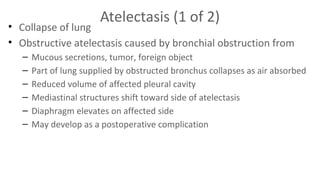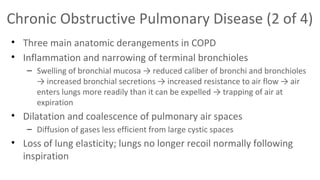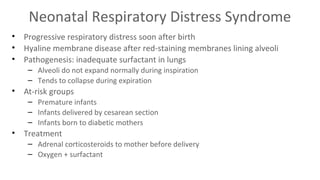The respiratory system chapter covers the structure and function of the lungs and respiratory system. Key points include how the lungs oxygenate blood and remove carbon dioxide via the processes of ventilation and gas exchange. Various respiratory conditions are discussed such as pneumonia, tuberculosis, COPD, asthma, and lung cancer. Pneumothorax, atelectasis, and ARDS involve the collapse of parts of the lung. Pulmonary function tests evaluate ventilation and gas exchange efficiency.
